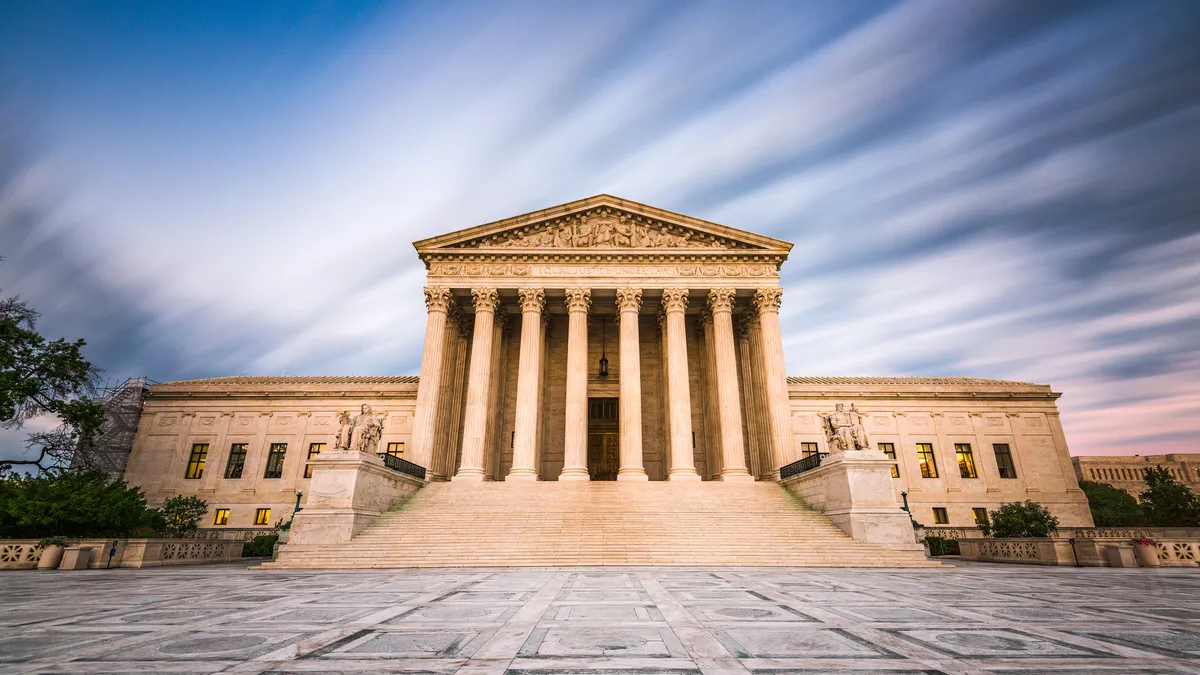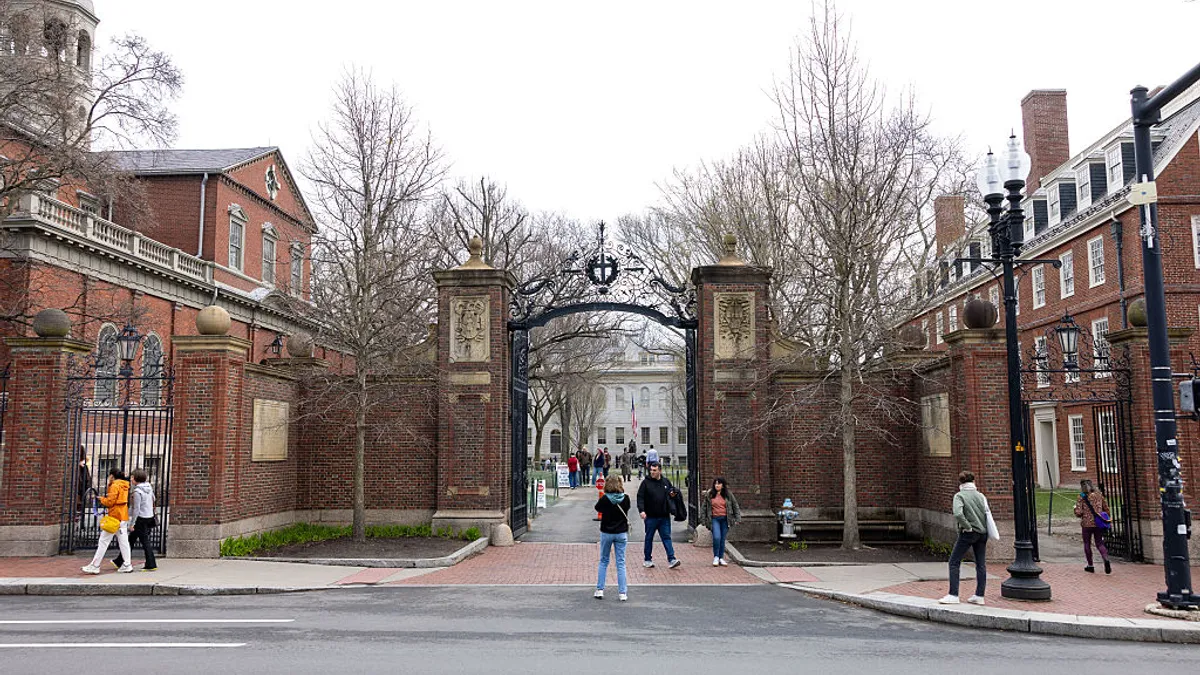HOUSTON — At a Thursday session of the National Association for College Admission Counseling’s annual meeting, a panelist posed a question to the room: Do you feel prepared if the U.S. Supreme Court were to strike down race-conscious admissions?
Not one college enrollment management official raised their hands to say yes.
It's far from a hypothetical, though. The high court is due on Halloween to start hearing oral arguments in cases that could fundamentally reshape nearly 50 years of legal precedent permitting tailored consideration of race in college admissions.
Legal experts foresee that, given the Supreme Court’s hard conservative majority, it will almost certainly end race-conscious admissions. In doing so it would be siding with Students for Fair Admissions, or SFFA, a legal group suing Harvard University and the University of North Carolina at Chapel Hill over their enrollment policies.
Thus, college leaders should start preparing for the likelihood that the Supreme Court will ax race as an admissions factor, presenters said at NACAC’s meeting. And institutions shouldn’t wait, said Art Coleman, a session panelist and managing partner and co-founder of EducationCounsel LLC, a policy, strategy and legal consulting firm.
Admissions professionals should start drawing in other departments, like institutional general counsels, to develop plans. Colleges should also prioritize research on current law and crafting public messaging for campuses.
After all, a decision against race-conscious admissions doesn’t just unravel long-standing admissions practices, they said. It strikes at the heart of values that higher education treasures: diversity, equity and inclusion.
Students will need to hear those tenets affirmed.
The cases before the Supreme Court
SFFA has taken on race-conscious practices before, to mixed results. It argues that Harvard’s admissions practices disadvantage Asian American students. Its claims in the UNC-Chapel Hill lawsuit differ slightly.
But at their core, both cases seek to blow up race-conscious admissions.
Arguments for preserving race-conscious practices have barely passed muster with previous iterations of the high court — it surprised the public in at least one recent legal challenge by still allowing use of these policies.
The Harvard and UNC cases were consolidated, but in July were unbundled to enable the court’s newest justice, Ketanji Brown Jackson, to participate in proceedings. Jackson has said she would recuse herself from the consolidated case because she sat on a Harvard advisory body.
Several institutions and higher ed organizations have submitted briefs in defense of Harvard and UNC-Chapel Hill. But the case still isn't front of mind for some colleges, presenters said.
That’s a mistake, Coleman said. Though based on Supreme Court patterns, a decision in the cases will likely drop late June 2023, Coleman said it’s also possible it will come as early as February.
High-ranking enrollment managers should assign one individual — a “brilliant” one — in their offices to handle research and planning ahead of the Supreme Court’s actions, said Ashley Pallie, director of undergraduate admissions at the California Institute of Technology.
Vice presidents shouldn’t attempt to take on these tasks themselves, Pallie said. Another priority will pull them away, and admissions offices must be ready, she said.
“Get a dedicated professional. Do not hand it off to an entry-level person,” Pallie said.
What else should institutions do?
That’s an important step because colleges must grasp the law on affirmative action as it currently stands, Pallie said. In cases like Grutter v. Bollinger, the Supreme Court previously upheld narrow applications of race in admissions, meaning institutions cannot institute racial quotas.
Admissions officials don’t have to go it alone either, she said. CalTech officials previously flew to the University of Texas at Austin, one of SFFA’s previous admissions lawsuit targets, to inquire about what the institution learned.
Devising a strategy ahead of a Supreme Court decision must involve multiple wings of a campus too, said Vern Granger, director of undergraduate admissions at the University of Connecticut.
Colleges can lean on their own faculty — academic departments studying education — for their expertise, Granger said. University of Connecticut’s, he said, has worked on projects like data gathering and planning for the institution’s pilot of test-optional admissions, in which colleges don’t require SAT or ACT scores from applicants.
An element of the Supreme Court's decision will be psychological, Coleman said. It will profoundly affect students and employees, he said.
Colleges must ready themselves to commit to diversity standards, Pallie said. If institutions claim equity as part of their missions, they must be prepared to stand for it, she said.
Institutions can design a public message that states they will comply with the law, but they uphold certain tenets, she said.
“Diversity is about to get real,” Pallie said.
What’s after the court cases?
Higher ed has poorly communicated to the public about race-conscious admissions, said Andrew Palumbo, vice president for enrollment management and dean of admissions at Worcester Polytechnic Institute.
That’s reflected in public polling, showing people across the political spectrum don’t favor these policies. Almost three-quarters of Americans don’t think gender, race and ethnicity should factor into admissions, a Pew Research Center survey found earlier this year.
Even some of the most progressive of states haven’t embraced race-conscious policies. California voters in 2020 declined to lift a ban on race-conscious admissions among public colleges, which was enacted in the mid-1990s.
Colleges should try to make the intricacies of admissions more transparent, Palumbo said.
And higher ed “hasn’t respected the opponent” enough, Pallie said. Affirmative action critics like SFFA have been deliberate in their planning, waiting for a friendly judicial environment. On the flip side, higher ed has not been vigilant.
An adverse ruling against race-conscious policies isn’t the end, Coleman said. Further legal fights over practices higher ed holds dear could very well follow.






















